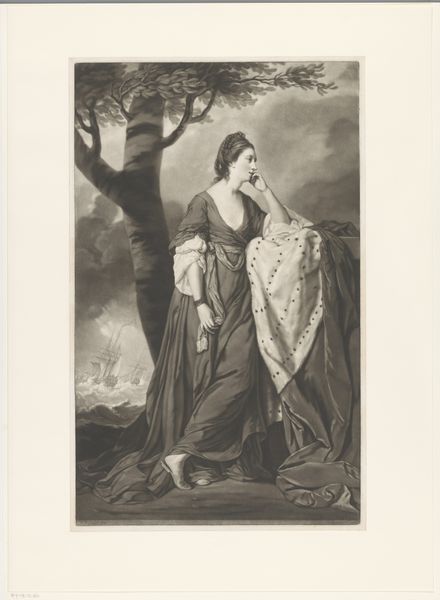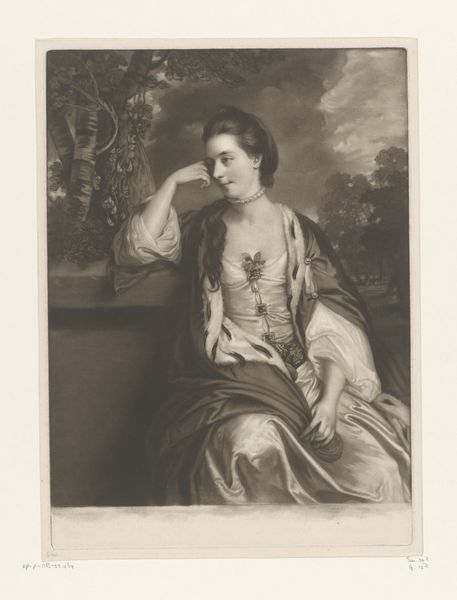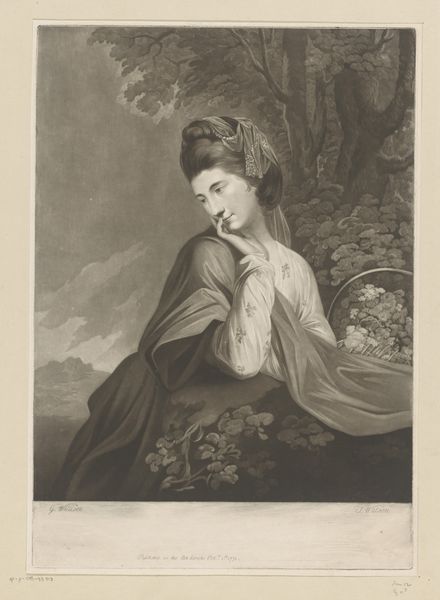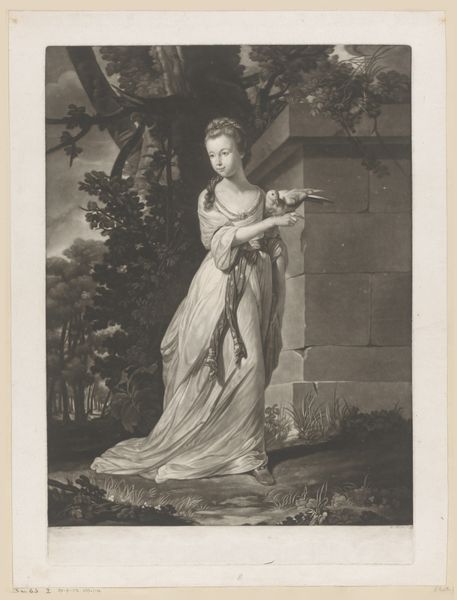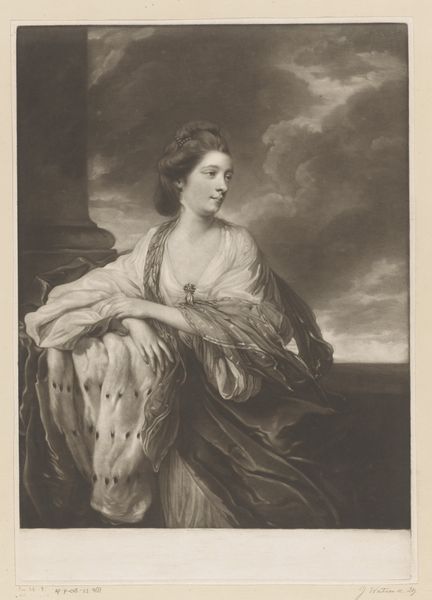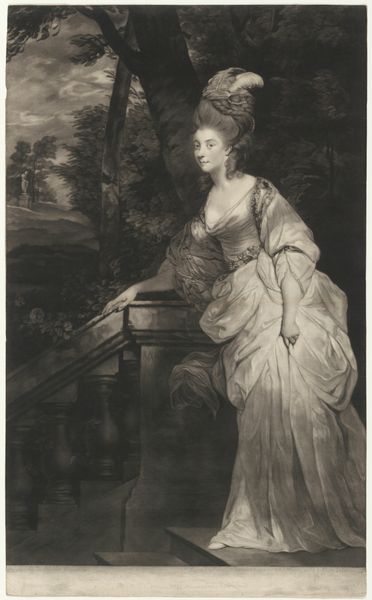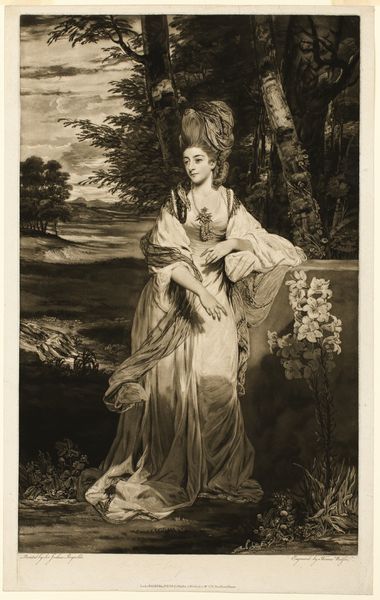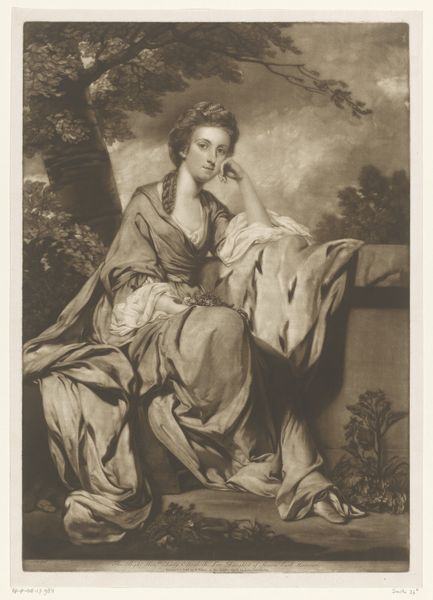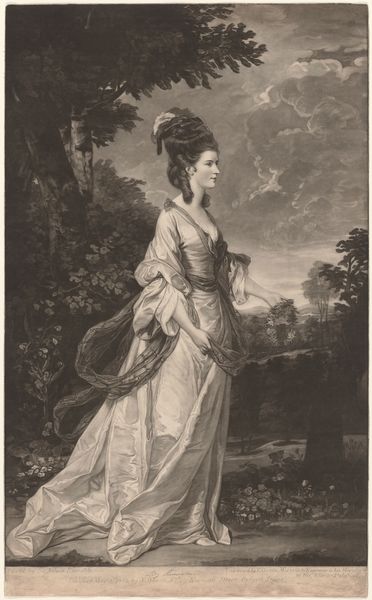
print, engraving
#
portrait
# print
#
genre-painting
#
engraving
#
rococo
Dimensions: height 506 mm, width 355 mm
Copyright: Rijks Museum: Open Domain
Editor: So, this is *Portret van Frances Bridges* from 1769 by James Watson, it's an engraving. I'm struck by how staged it feels, even down to the wistful expression. What's your take on this piece? Curator: It's definitely a constructed image, and that's key. Prints like these, particularly engravings, served a vital social function in the late 18th century. They democratized portraiture. Paintings were for the elite, but engravings allowed the middle class to participate in the same visual culture, mimicking the aristocracy. Notice the Rococo style; what does that signify to you? Editor: Something decorative, maybe a little frivolous? Is it suggesting that this imagery might be aimed at, and consumed by, women in particular? Curator: Precisely. Think about who consumed these images. It wasn't just about admiring Frances Bridges, it was about aspiration. It’s about adopting a pose, projecting an image of fashionable leisure. How does this "portrait" participate in creating a certain vision of femininity, class, and social role? Editor: I never thought about it as actively shaping social roles, only reflecting them! So, the print isn’t just art; it's part of a larger system of visual communication reinforcing societal values. Curator: Exactly! It shows how seemingly innocent images participate in a wider conversation about social identity and class. We are looking at the public face of art, its political role. Editor: This was much more thought-provoking than I initially anticipated. Curator: It always is when you look beyond the surface!
Comments
No comments
Be the first to comment and join the conversation on the ultimate creative platform.

